 [Summary] [Summary] |
Aix island |
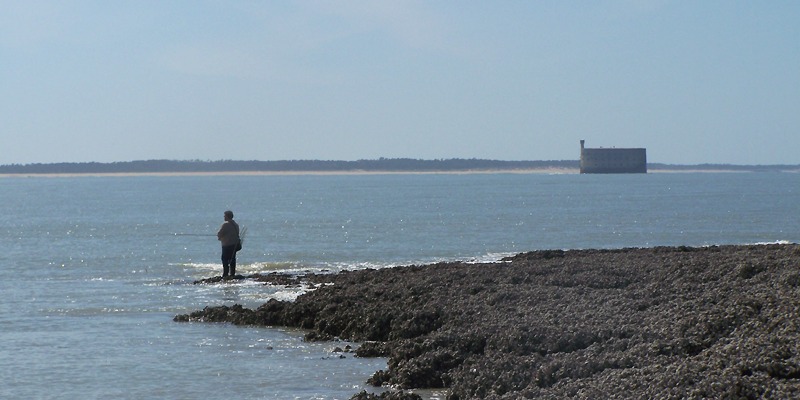 |
 Spot
13. A fisherman at Saint-Catherine Point, near the harbour of the island.
The Saumonards are on the opposite side of the strait, behind Fort-Boyard.
Aix is a true little wonder, and many visitors invade it each day. Cars
are not welcome. |
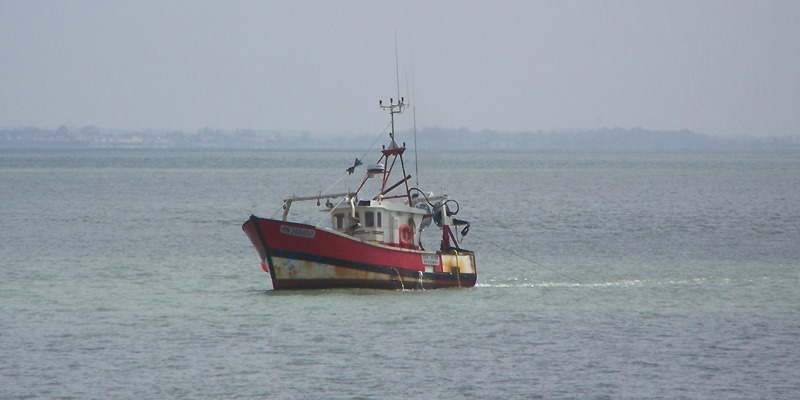 |
 Scallop trawler off the northern coast. Aix sheltered many Acadian people after the Grand Dérangement (1755). |
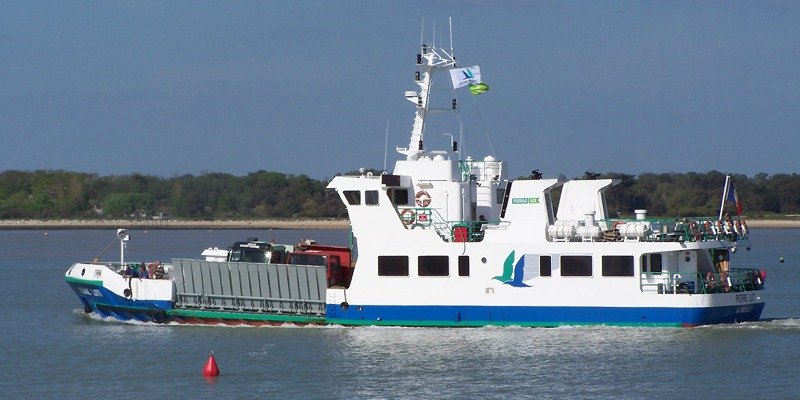 |
 Many
ferries come from La Rochelle and Oléron, but the only way to bring
a car or a truck to the island is to take the shuttle from Fouras. Here
is the Pierre Loti, named after the famous writer who lived in
Oléron and Rochefort when child. |
 Eastern coast: Anse du Saillant, Pointe de Coudepont Eastern coast: Anse du Saillant, Pointe de Coudepont |
| |
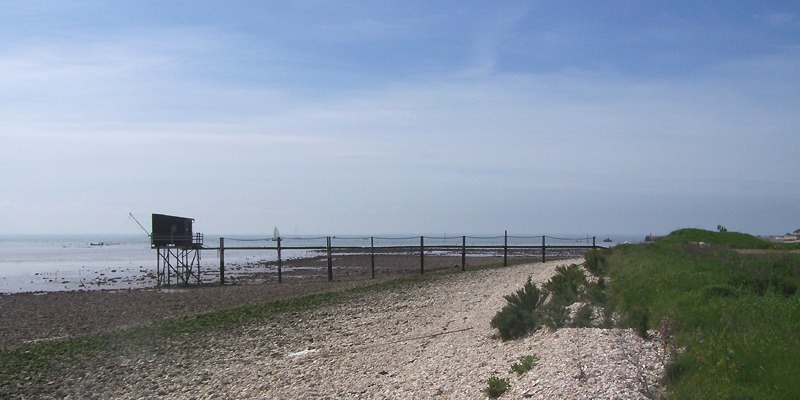 |
 Spot 13. Impossible
to imagine a cove without a carrelet. We are on the muddy side,colonized
by oysters and mussels. Spot 13. Impossible
to imagine a cove without a carrelet. We are on the muddy side,colonized
by oysters and mussels. |
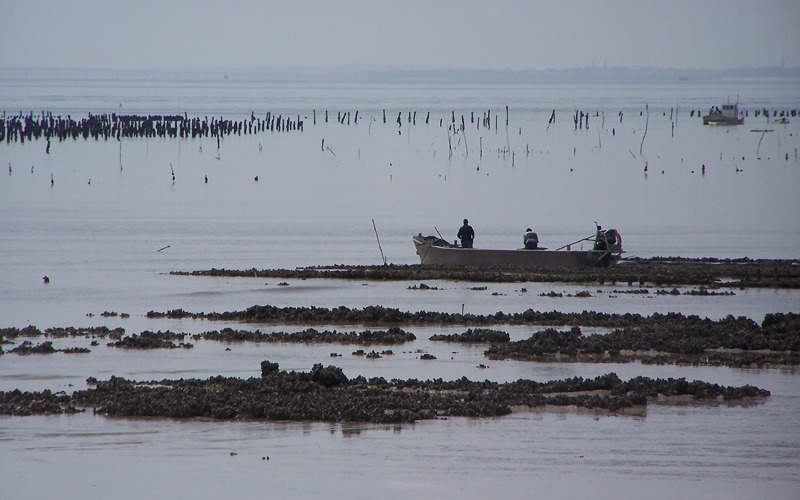 |
 Low tide off
the cove. Wild and parked oysters cohabit. Offshore, a bank of bouchots. Low tide off
the cove. Wild and parked oysters cohabit. Offshore, a bank of bouchots. |
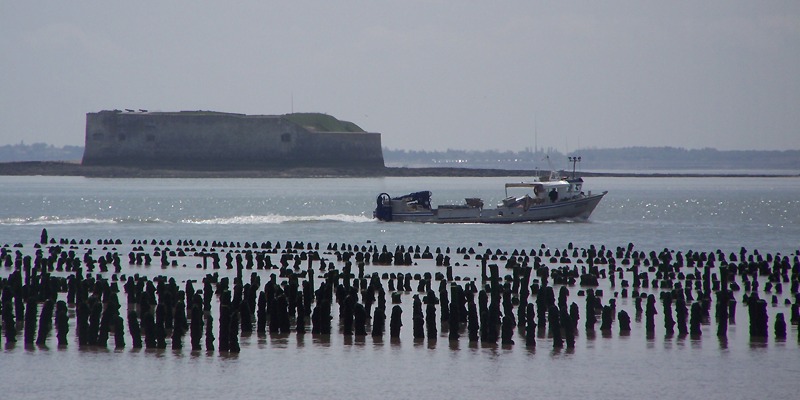 |
 A ponton in the channel between the Saillant and Fort-Enet. The mainland is in the background. A ponton in the channel between the Saillant and Fort-Enet. The mainland is in the background. |
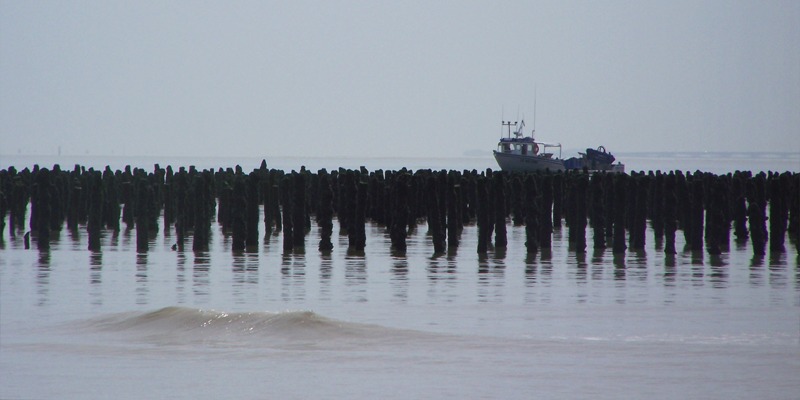 |
 Bouchots.
Near the sky-line, a mirage flattens the Oleron bridge. Bouchots.
Near the sky-line, a mirage flattens the Oleron bridge. |
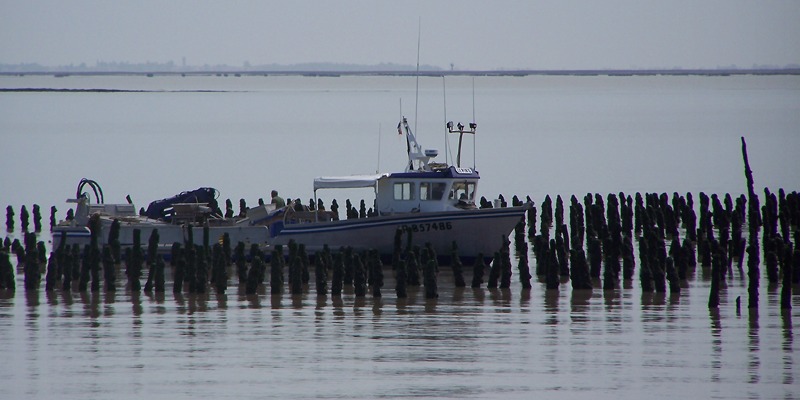 |
 Shell-farming is not an easy job. In the background, oyster-parks off Rochefort. Shell-farming is not an easy job. In the background, oyster-parks off Rochefort. |
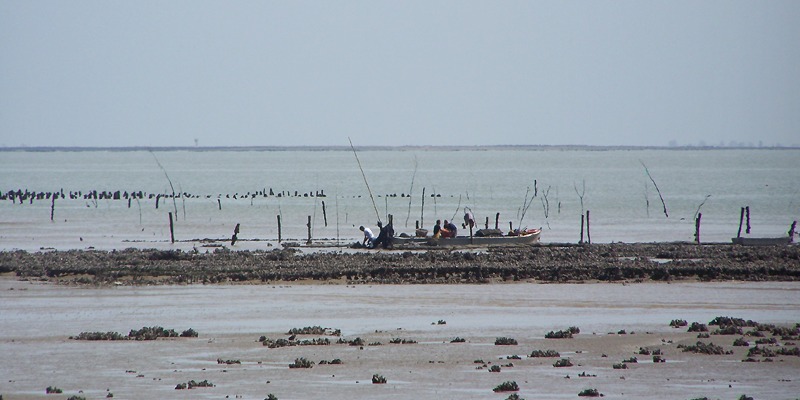 |
 I am absolutely unable to imagine what these guys can do. 175 farmers work in the cove; two live on the island. I am absolutely unable to imagine what these guys can do. 175 farmers work in the cove; two live on the island. |
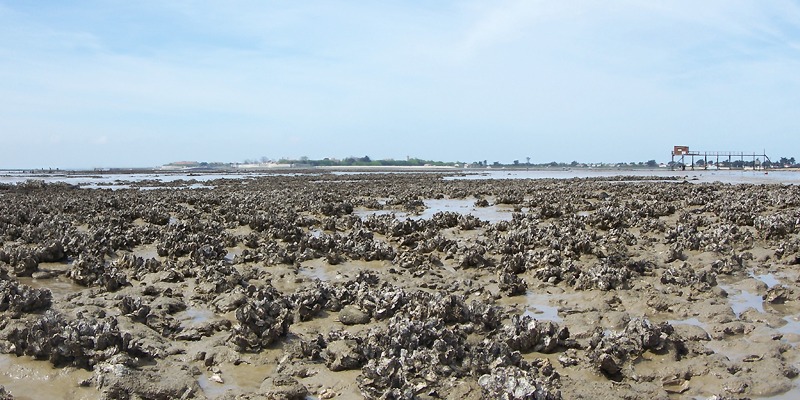 |
 Spot 14. Wild oysters at Coudepont Point. Each summer, dozens of people get severe injuries here, by walking without boots. A helicopter makes the shuttle with the hospitals of Rochefort and Marennes. The Saillant cove is in the background. Spot 14. Wild oysters at Coudepont Point. Each summer, dozens of people get severe injuries here, by walking without boots. A helicopter makes the shuttle with the hospitals of Rochefort and Marennes. The Saillant cove is in the background. |
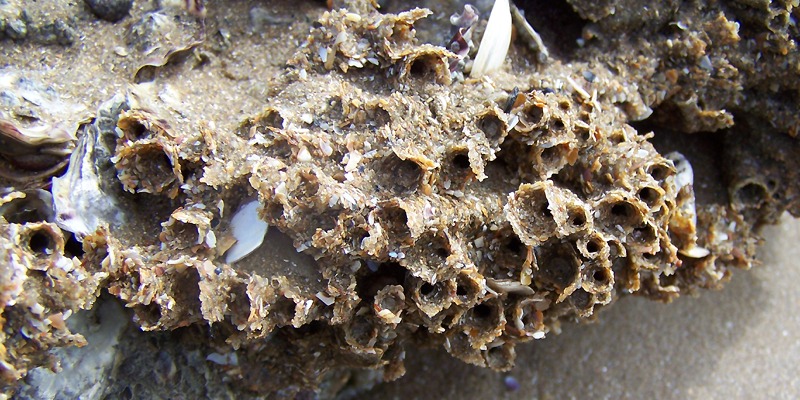 |
 Honeycomb-worms are the first reef-builders of the area. Oysters came in second, and fix themselves on the tubes. Honeycomb-worms are the first reef-builders of the area. Oysters came in second, and fix themselves on the tubes. |
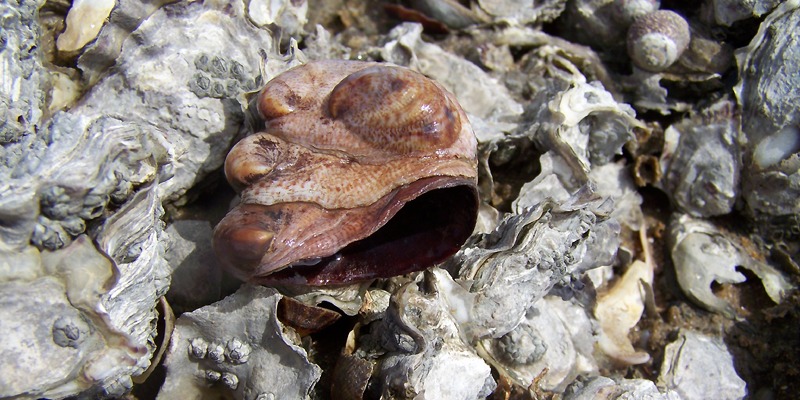 |
 Crepidula
fornicata (Linnaeus, 1758). It arrived in Europa with oysters at the
end of the XIXth century. They are thousands
of billions all along the Atlantic coast of France. Now introduced in western
Mediterranean. Crepidula
fornicata (Linnaeus, 1758). It arrived in Europa with oysters at the
end of the XIXth century. They are thousands
of billions all along the Atlantic coast of France. Now introduced in western
Mediterranean. |
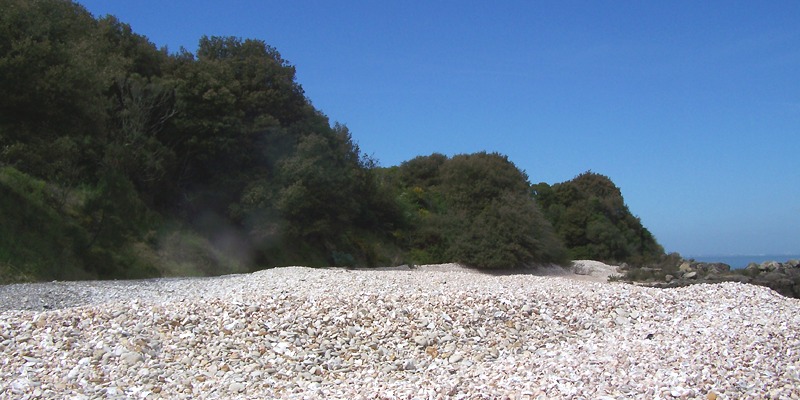 |
 Dunes of shells protect the bush at Coudepont. Two species only: the oysters, and the crepidulas. Dunes of shells protect the bush at Coudepont. Two species only: the oysters, and the crepidulas. |
 Western coast: wildlife off the Jeamblet Western coast: wildlife off the Jeamblet |
| |
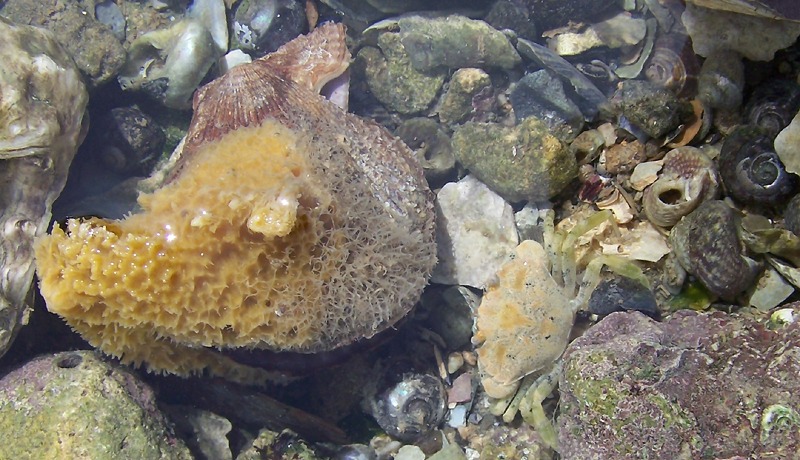 |
 Spot 15. The little crab was completely in love with this yellow sponge. |
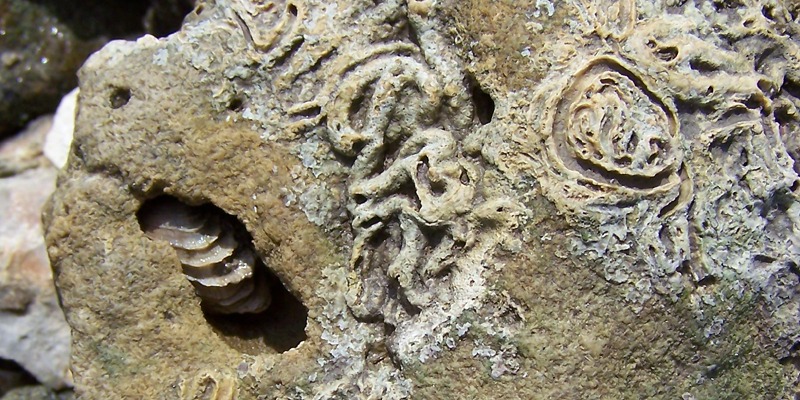 |
 15mm Irus irus (Linnaeus, 1758) in a cavity bored by a Petricola. Click in the pic to load a detail. |
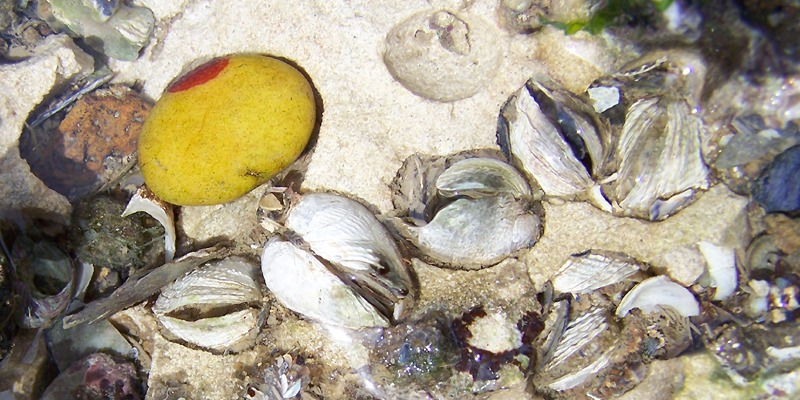 |
 Petricola lithophaga Petricola lithophaga (Retzius, 1786). We are near the northern limit of their range. Click in the pic to load a detail. |
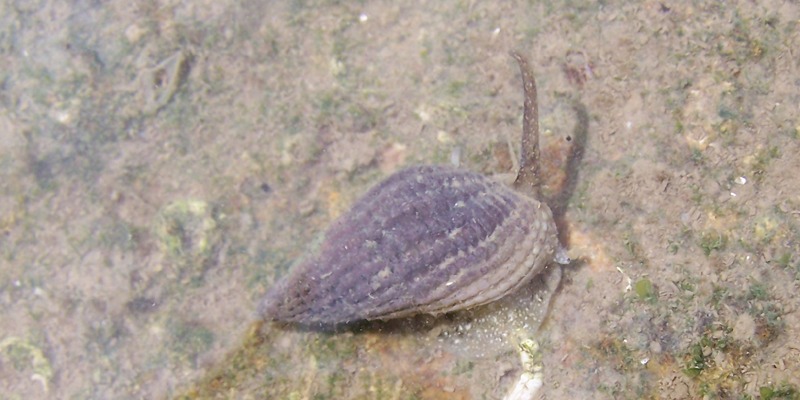 |
 Nassarius reticulatus Nassarius reticulatus (Linnaeus, 1758). Often, the shell is covered with these violet coralline algae. |
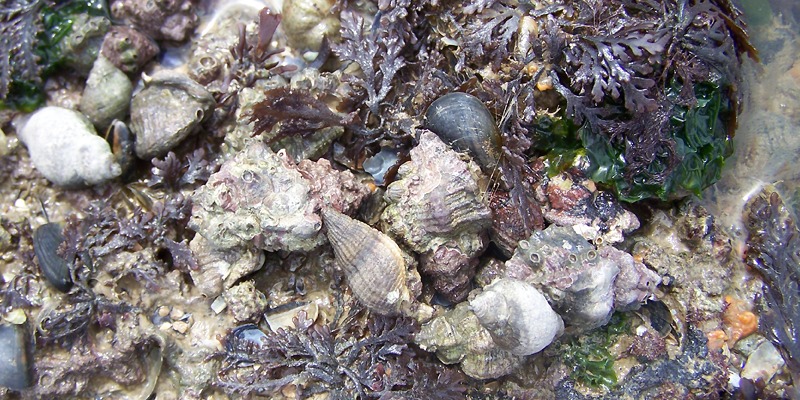 |
 Near
the Jeamblet reef, 700m offshore, in mussel area. The reef is invaded
by various Drills. In the tide pools, colonies of Ocenebras stay on rocks,
just below the sea level, near their eggs (april). |
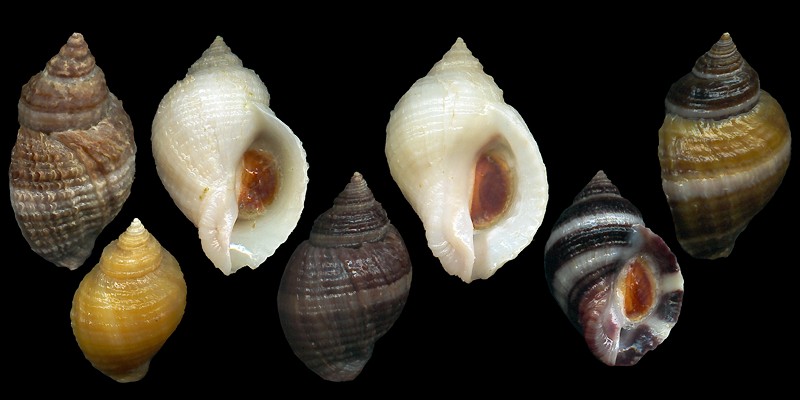 |
 Nucella lapillus Nucella lapillus (Linnaeus, 1758). Shells from this spot are less scaly; they live in a place exposed to waves, and mussels do not offer the same shelters than oysters. Here, like in the other spots, the dominant colour is the white. 19-28mm. |
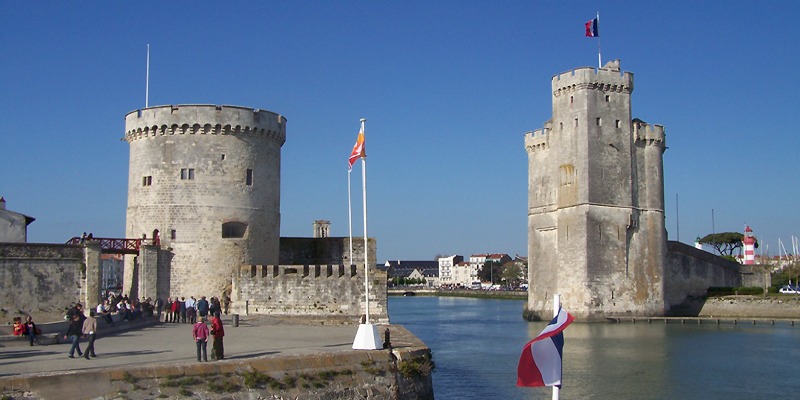 |
 The
tour is finished. Now it's time to compare the populations of Ocenebras. |
 Where do you wish to go now? Where do you wish to go now? |







































